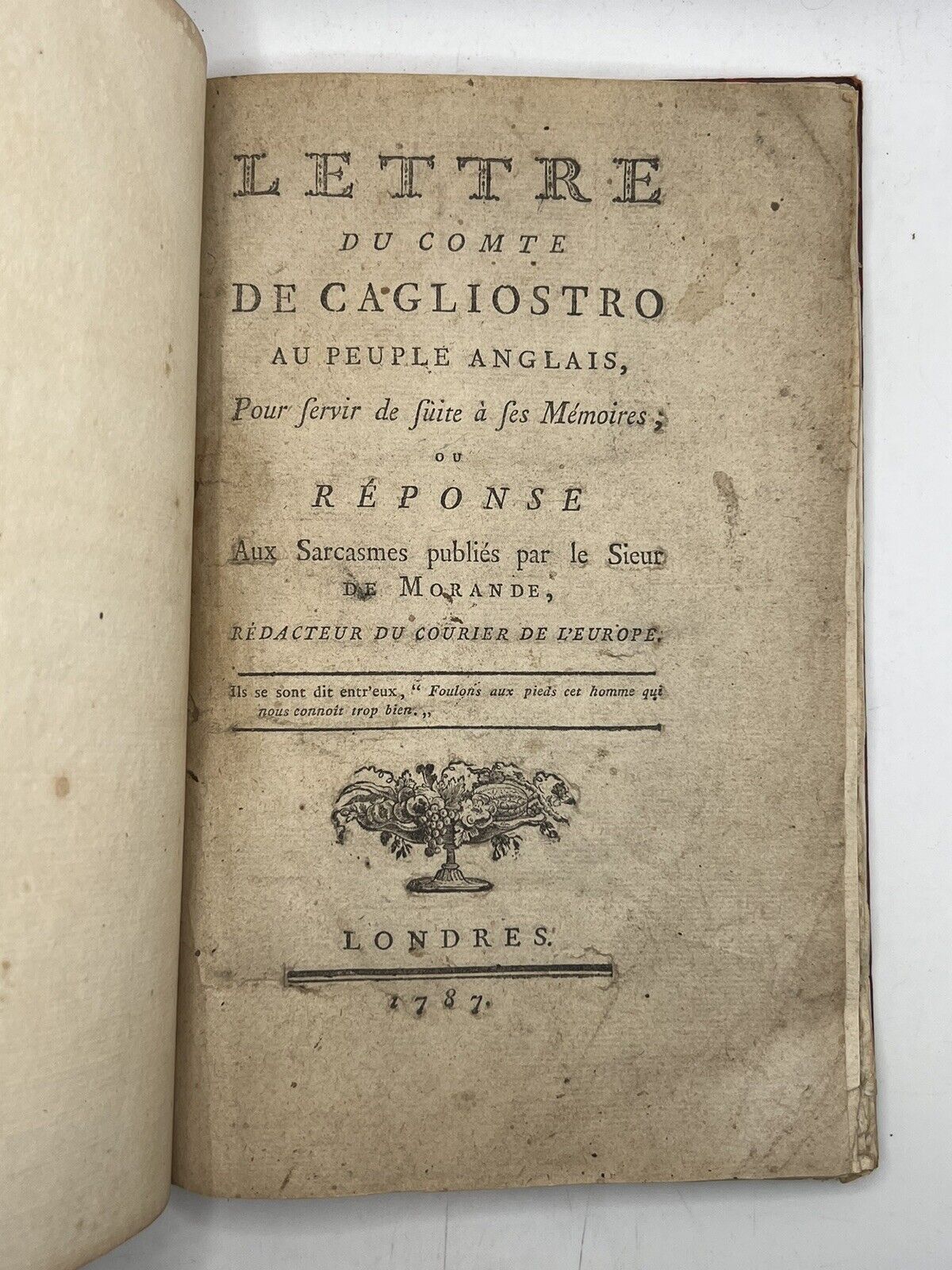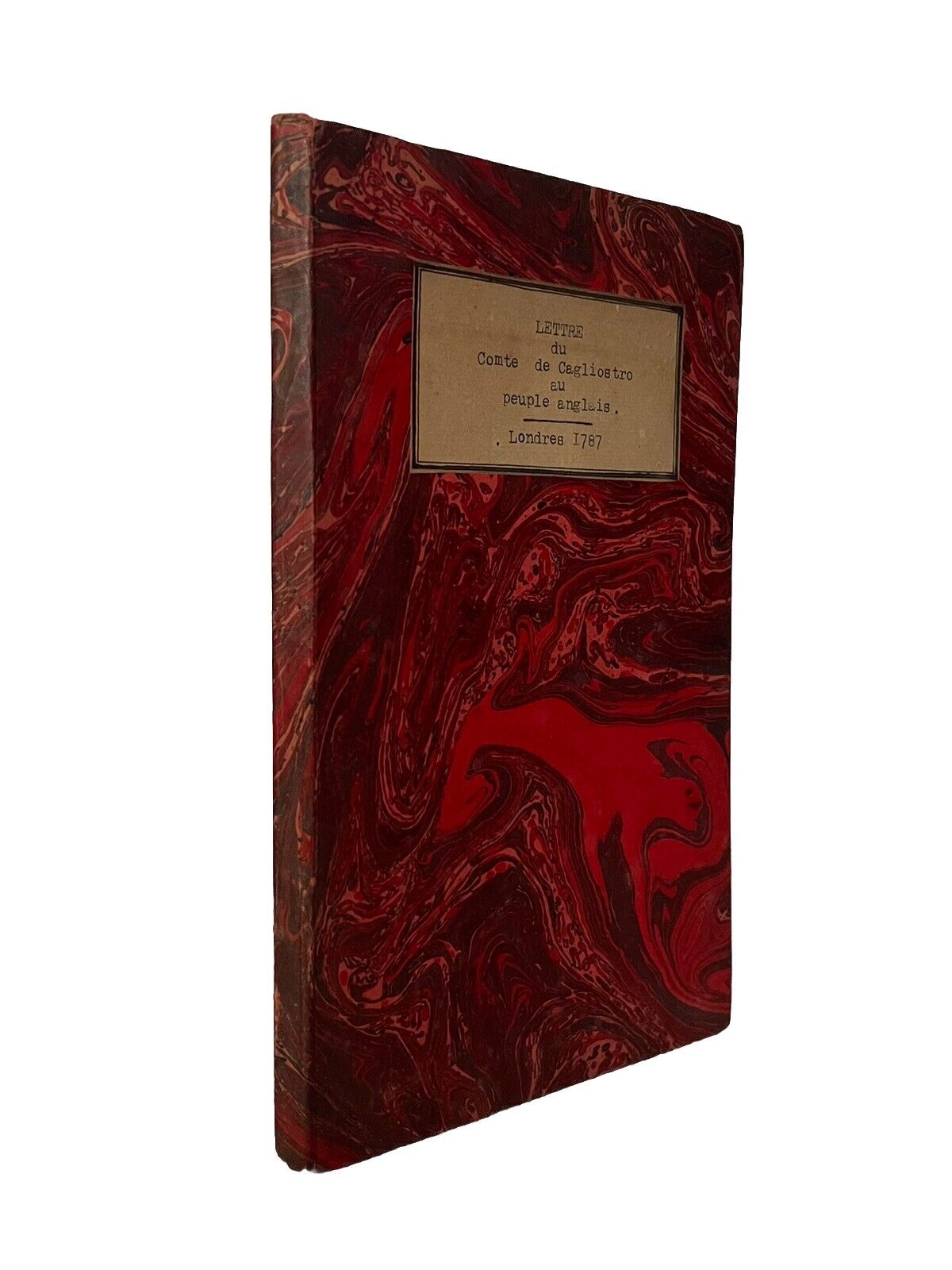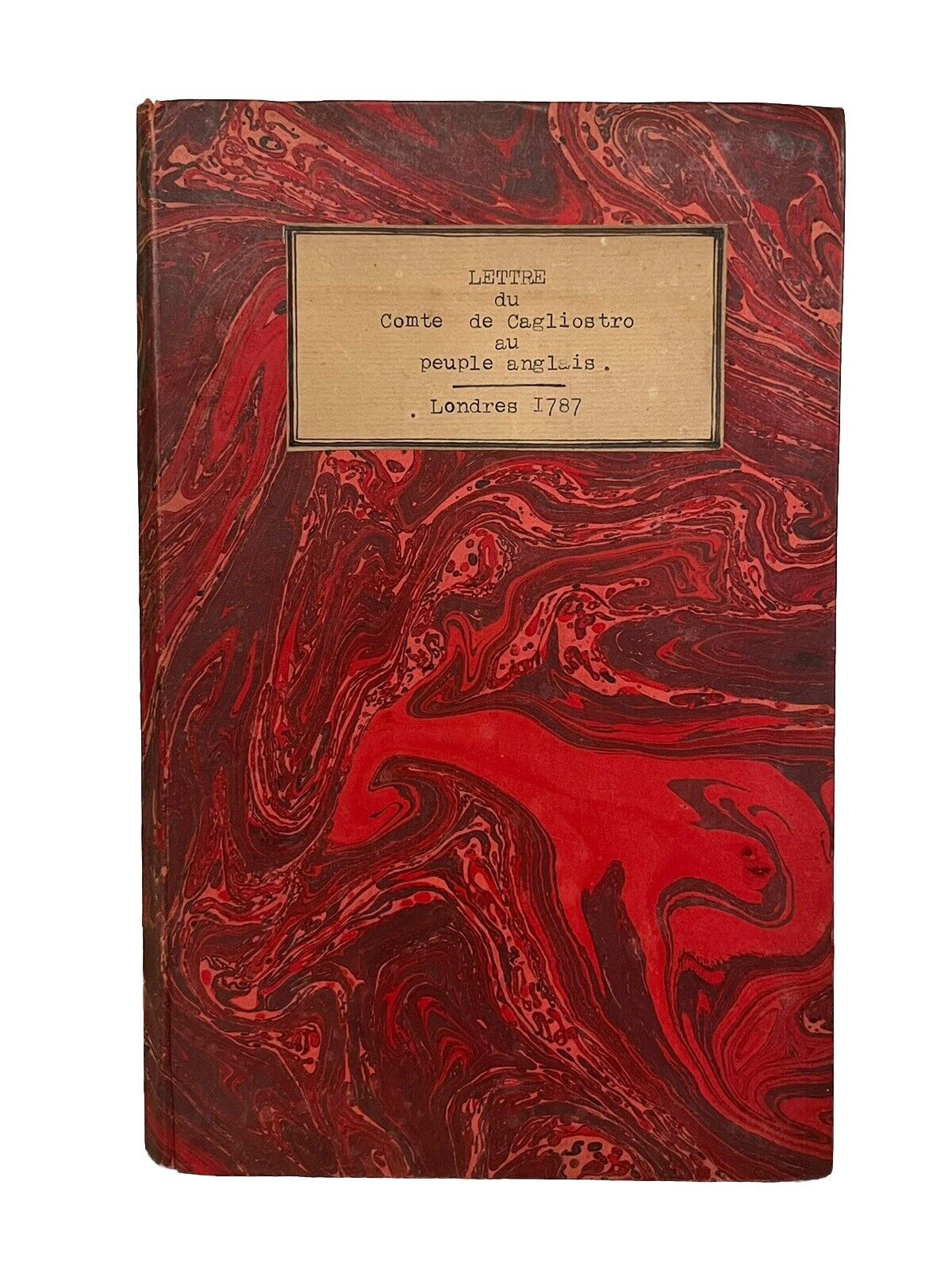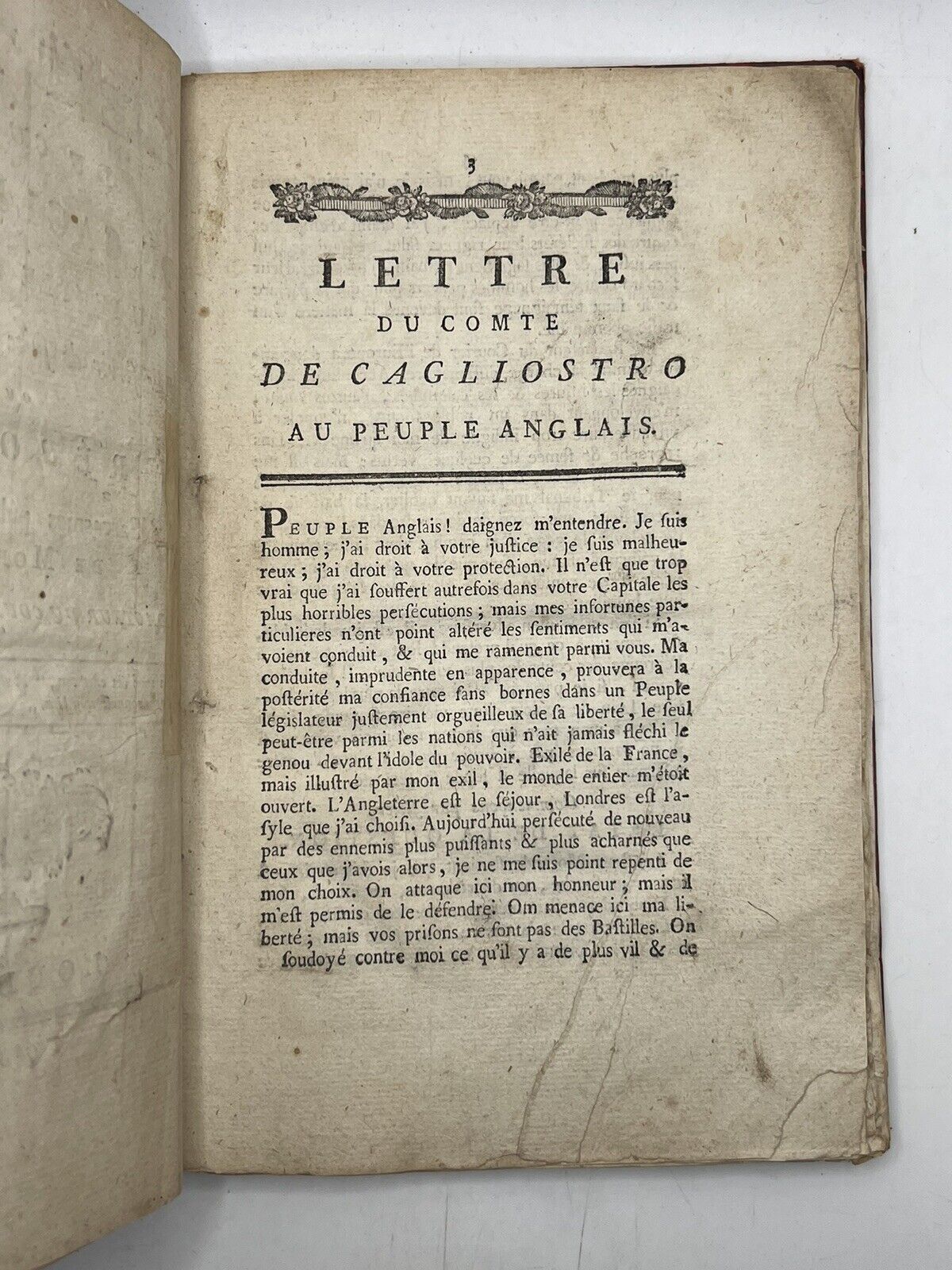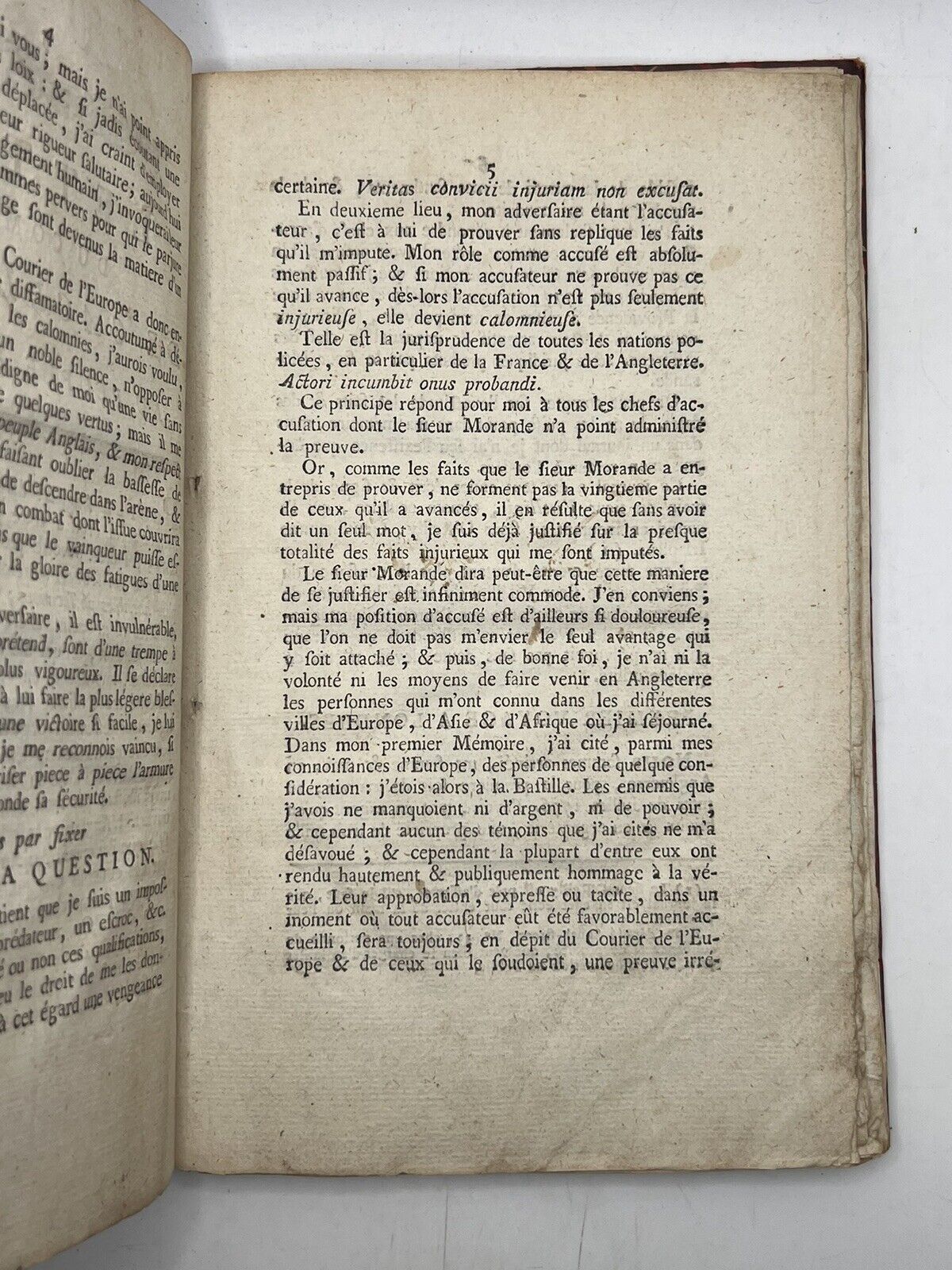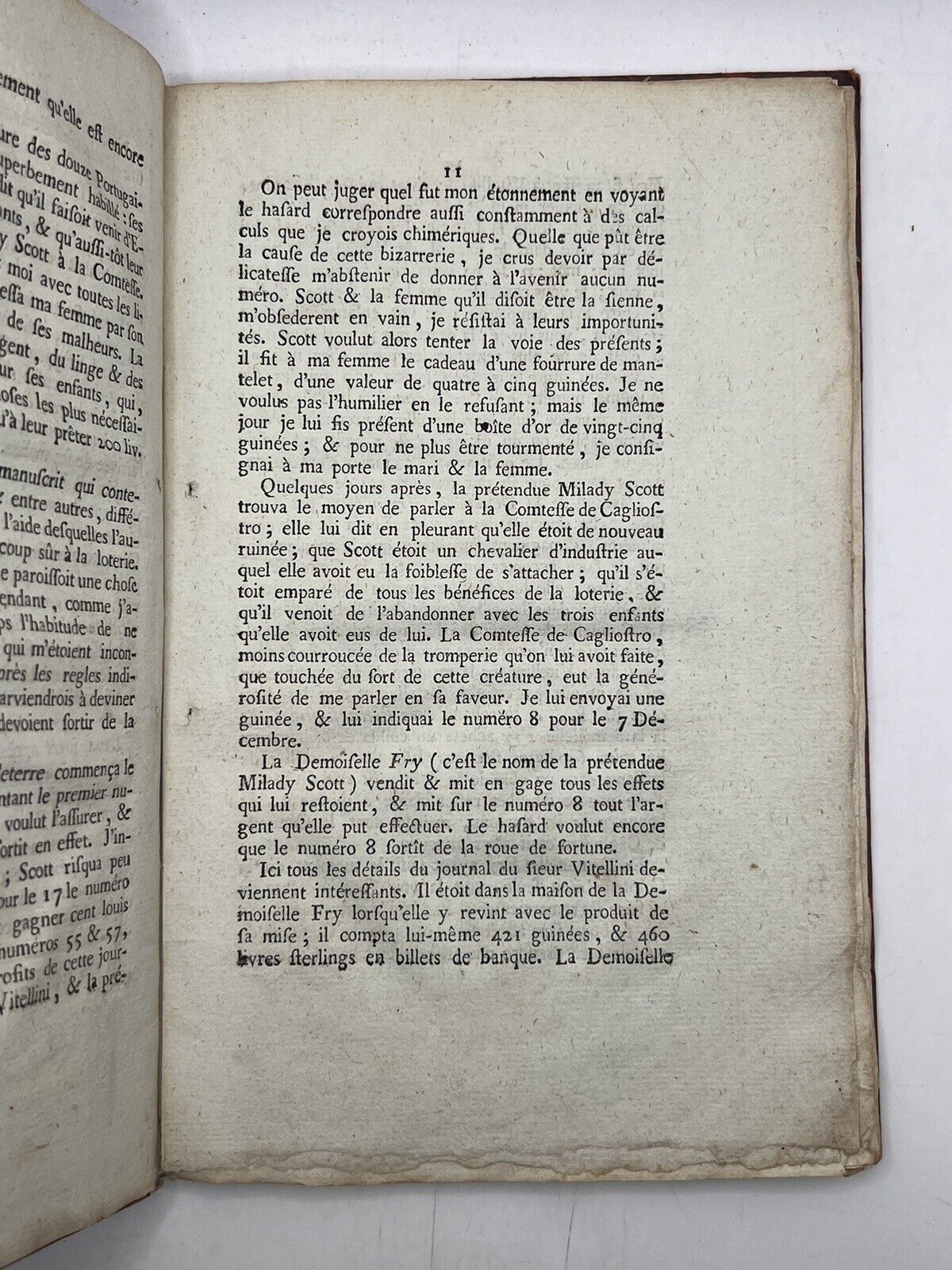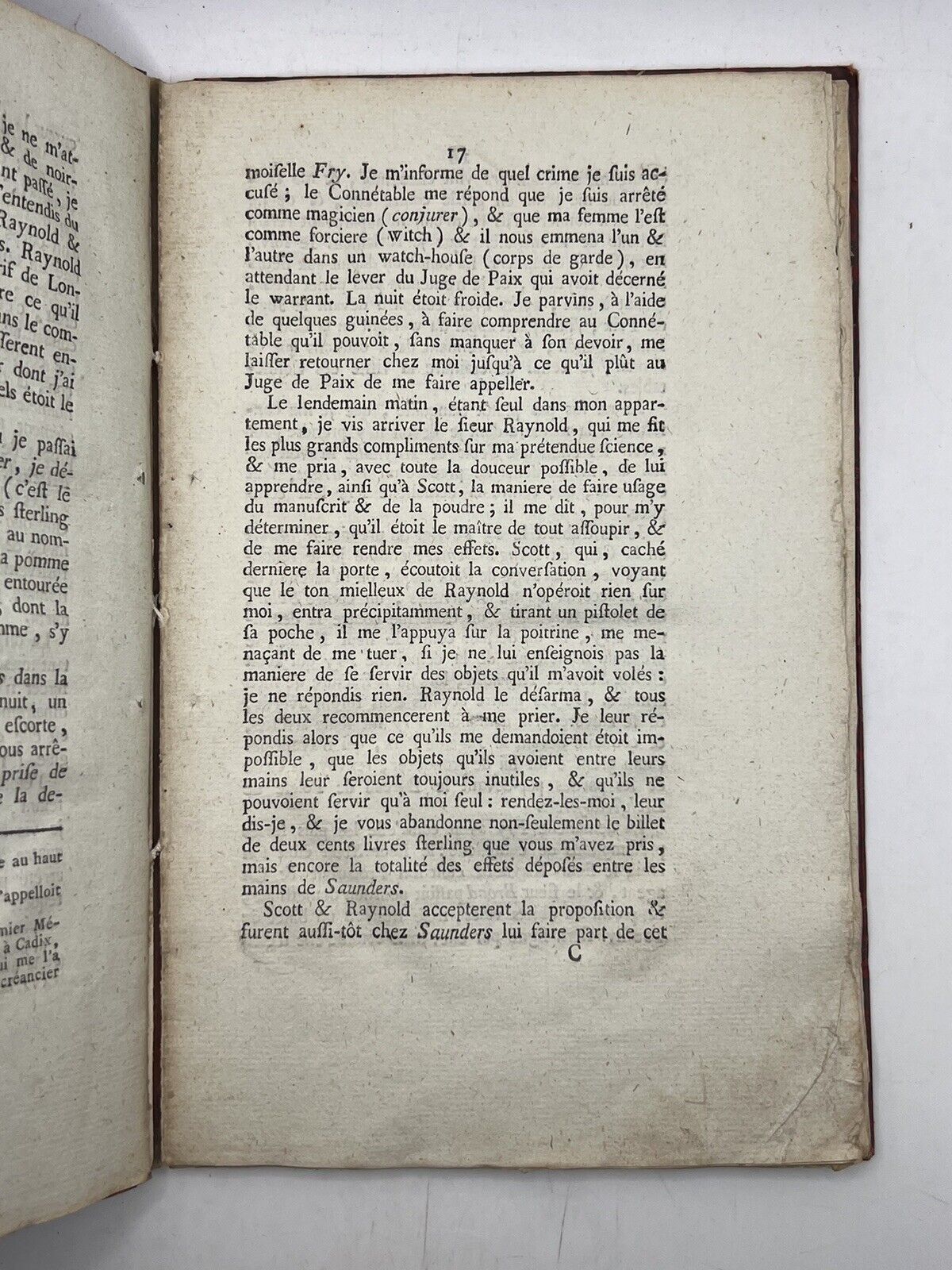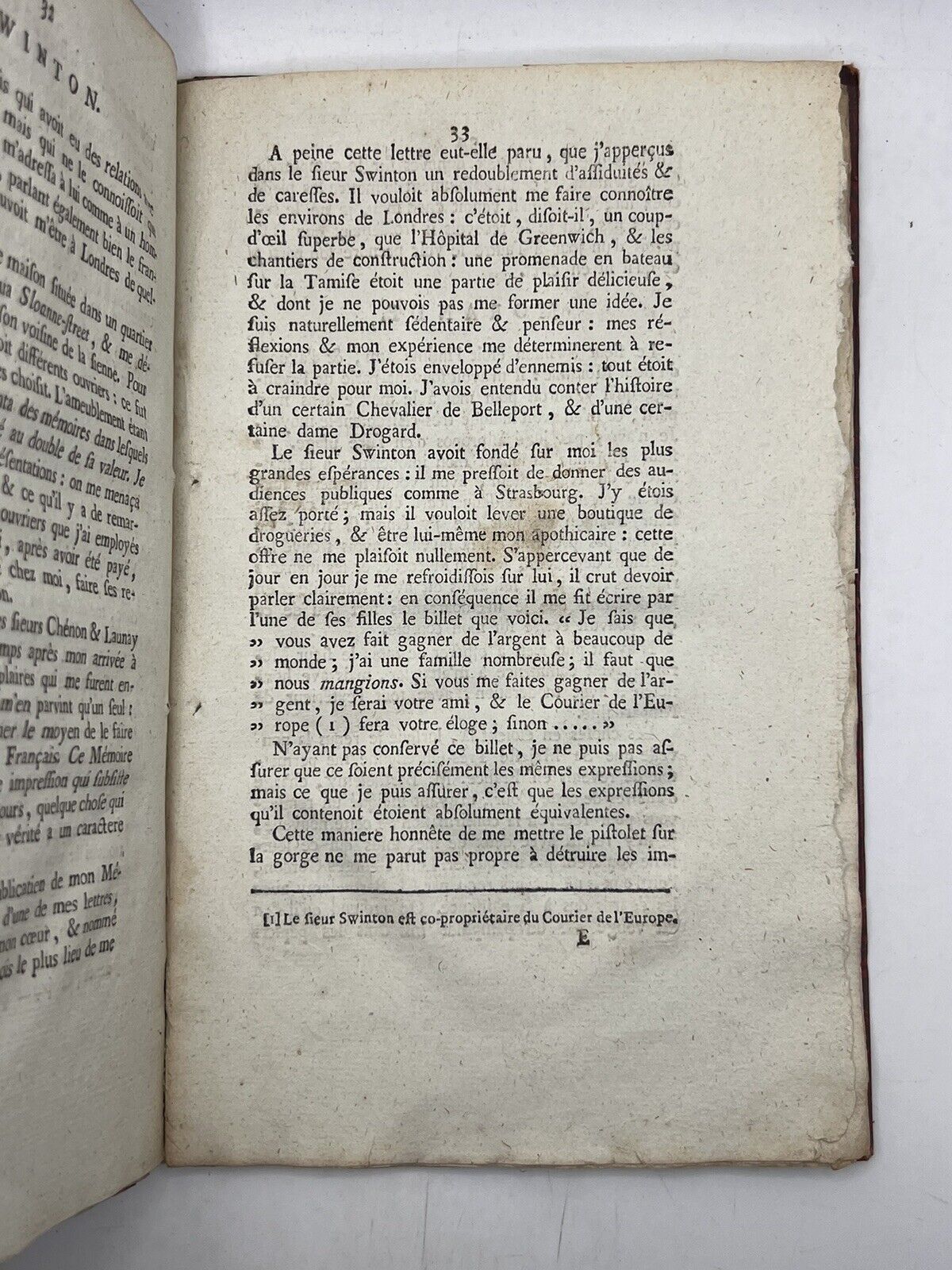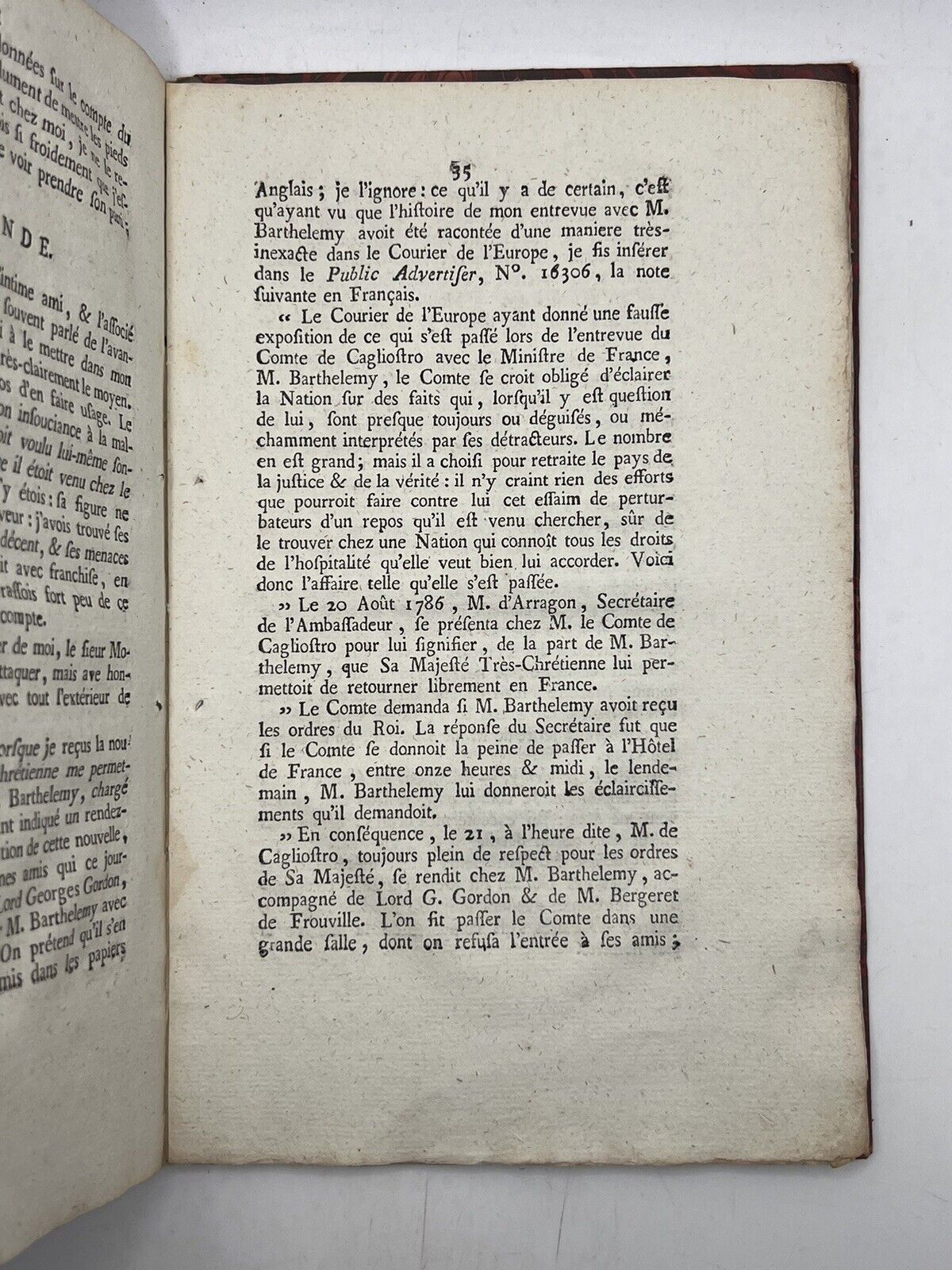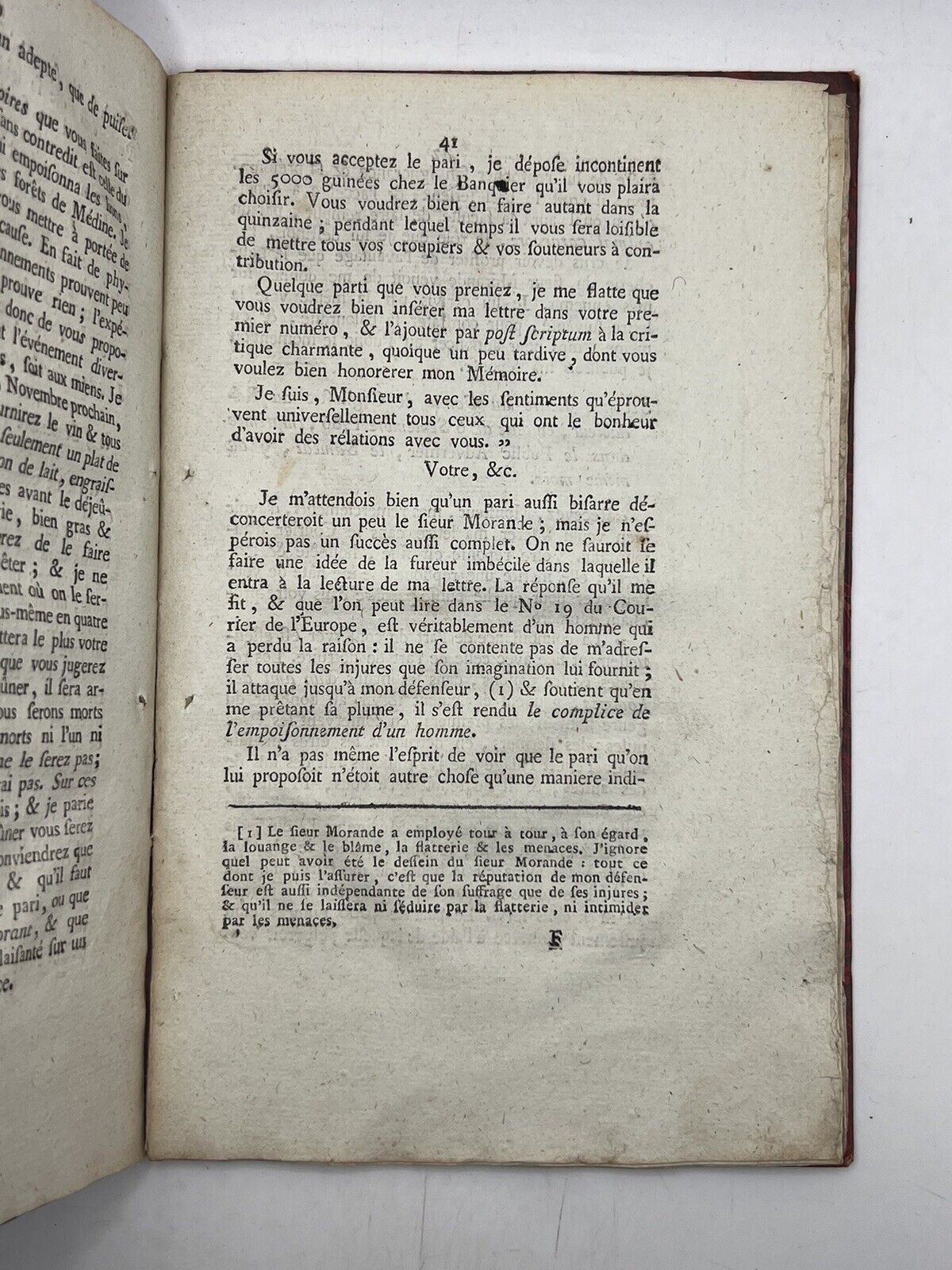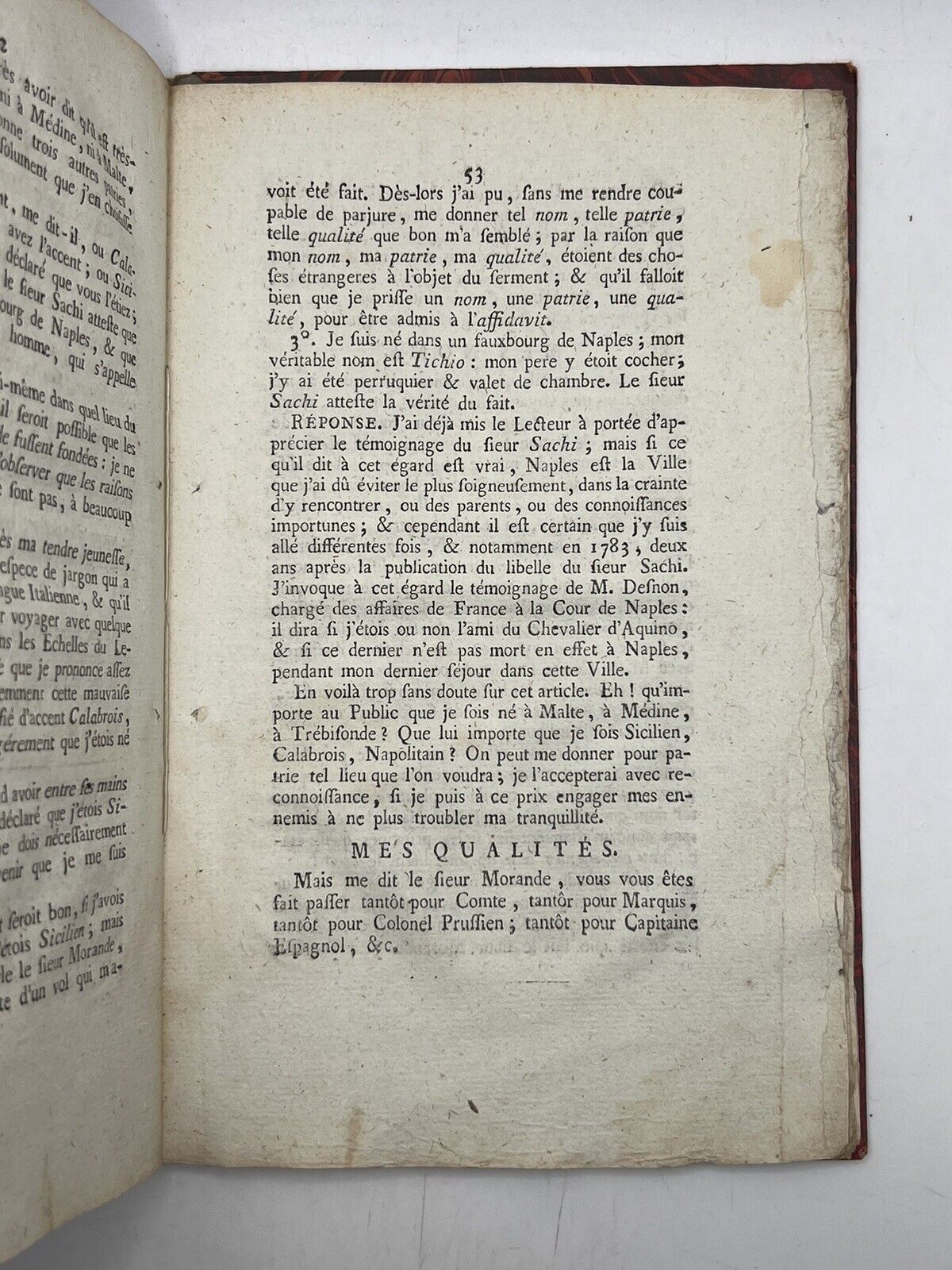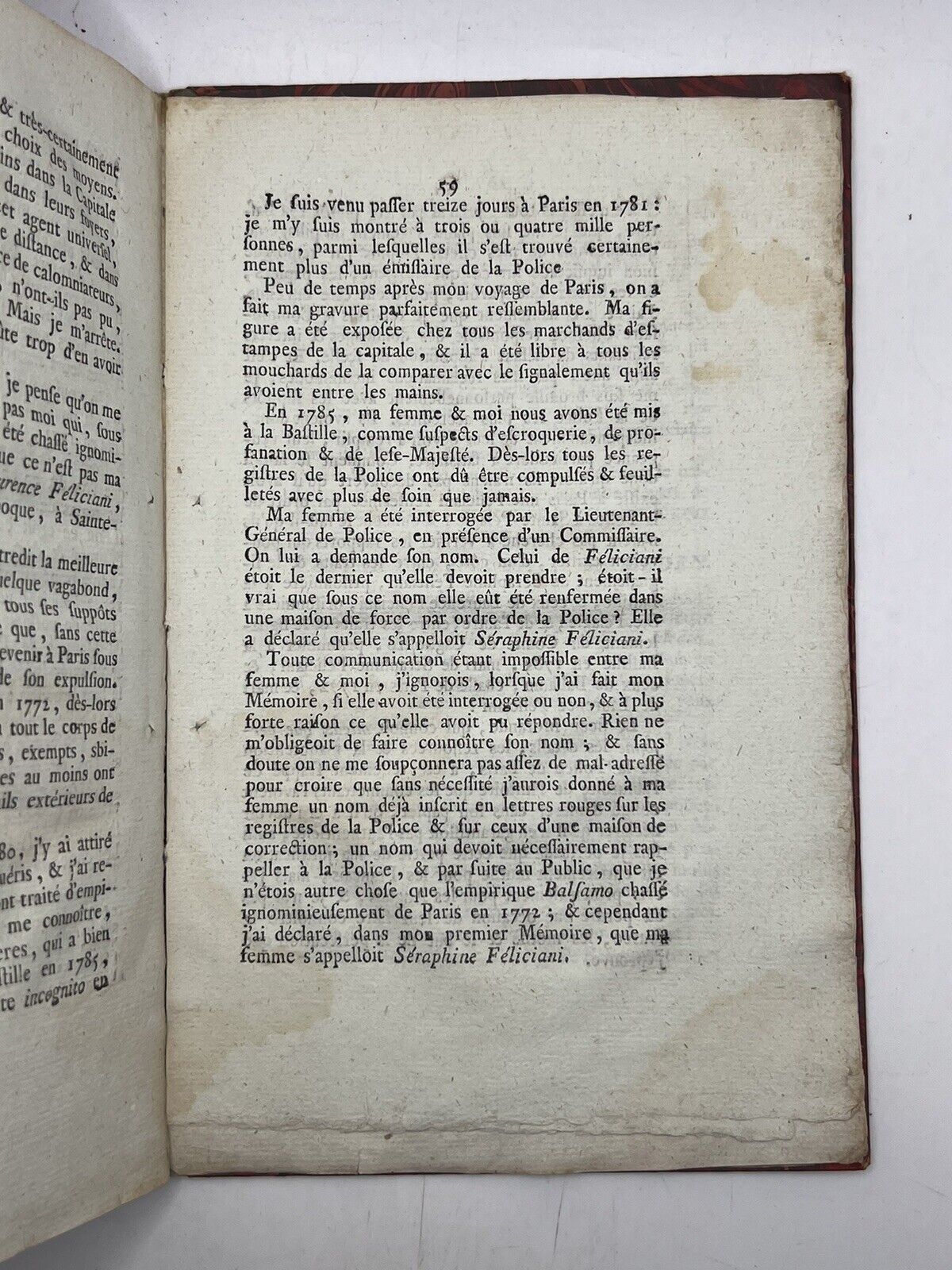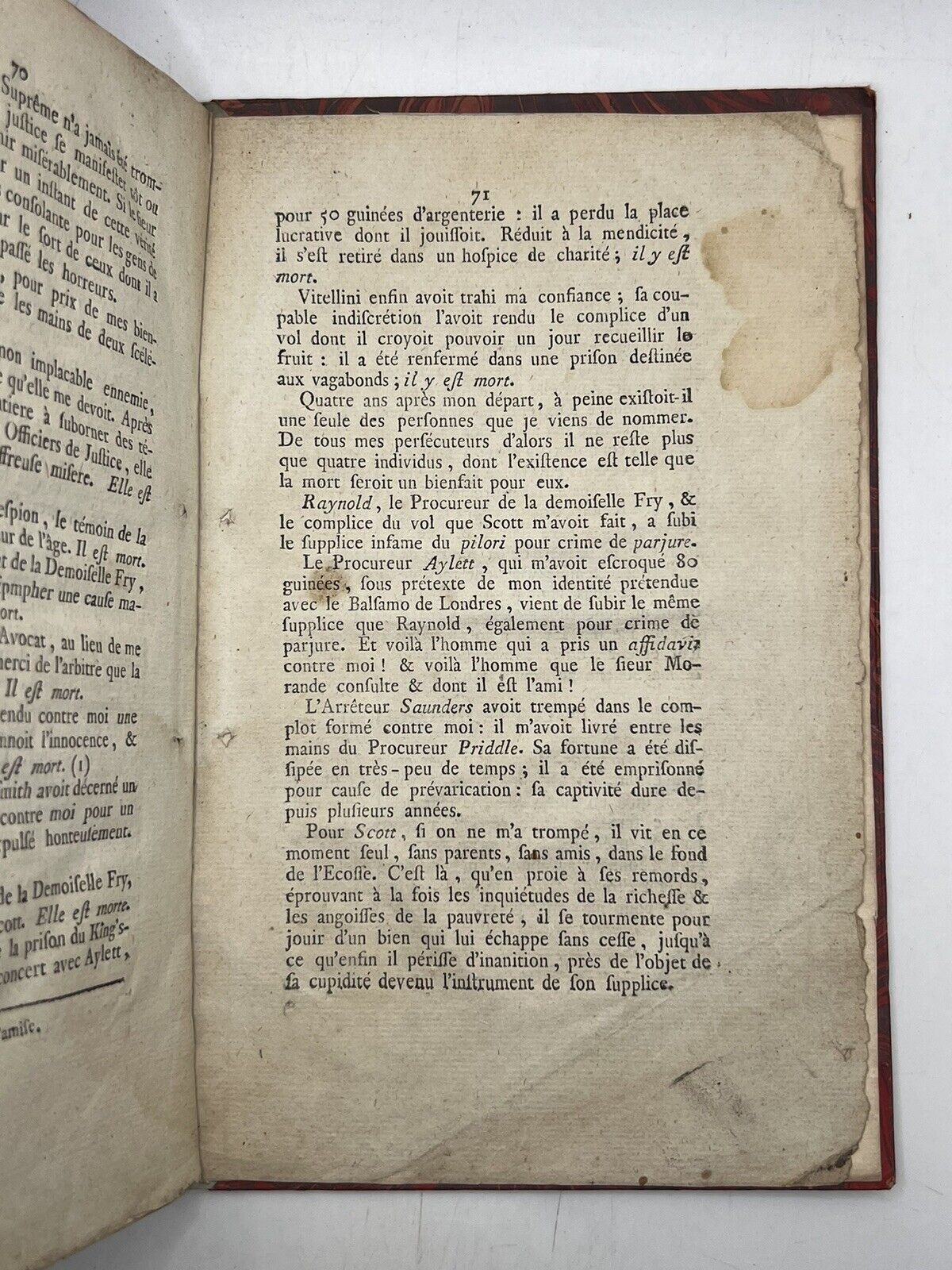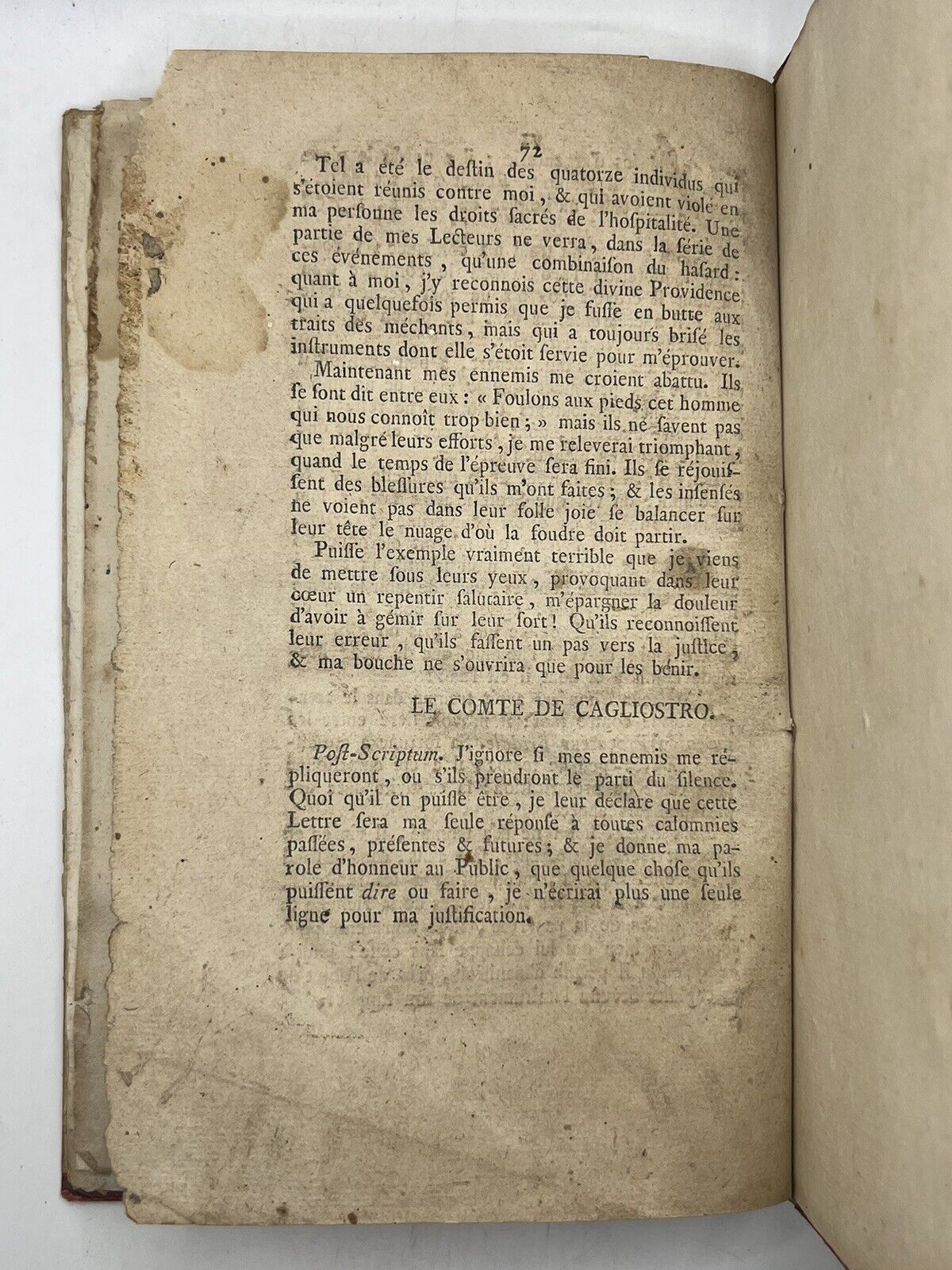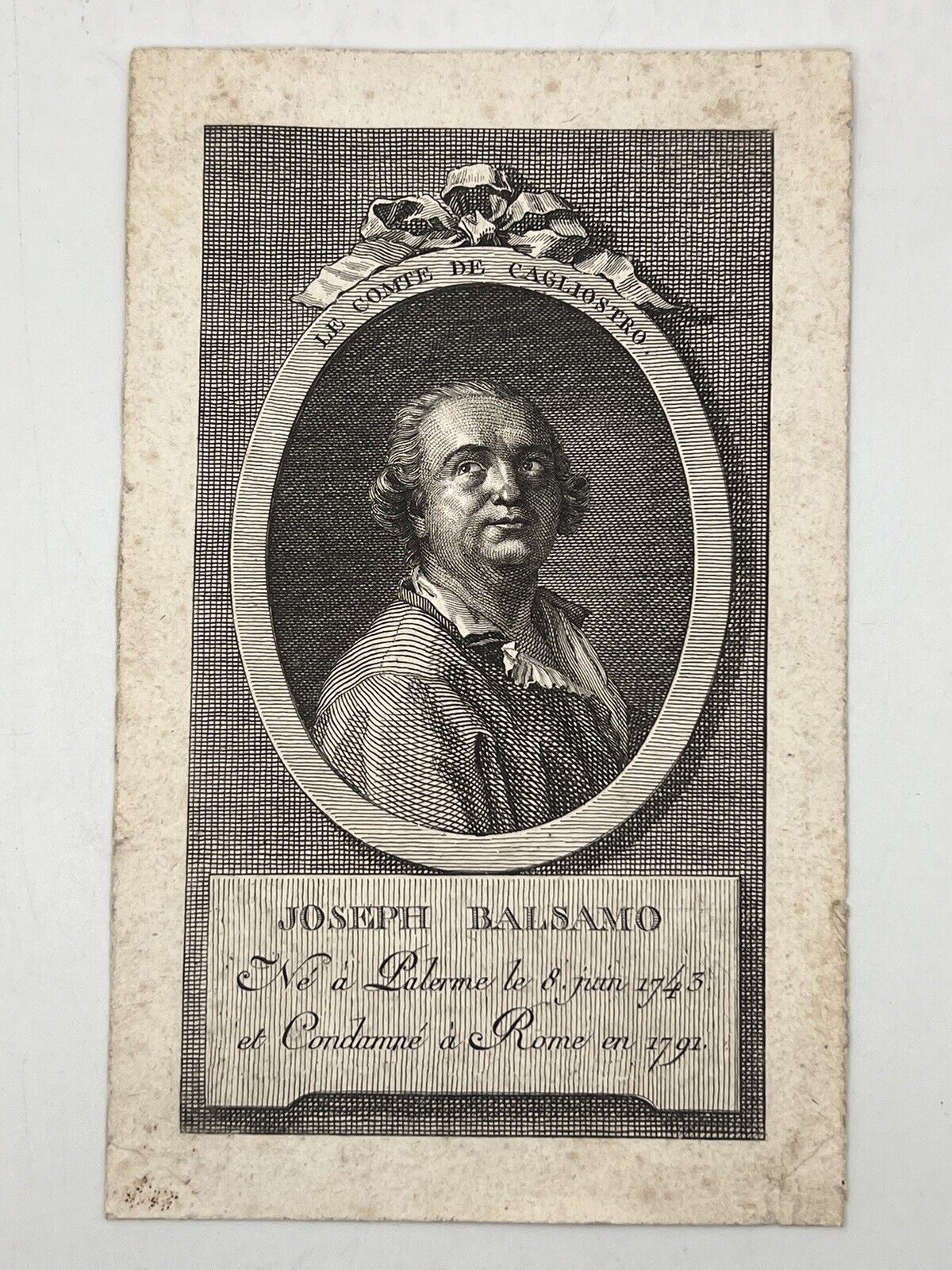Cagliostro's Letter to the English People 1787
Cagliostro's Letter to the English People 1787
Couldn't load pickup availability
Lettre Du Comte de Cagliostro au Peuple Anglais, Pour Servir de Suite a Ses Memoires; Ou Réponse Aux Sarcasmes Publies Par le Sieur de Morande, Rédacteur du Courier de d'Europe. Londres, 1787.
The Letter from the Count of Cagliostro to the English People, to Serve as a Sequel to His Memoirs; or Response to the Sarcasms Published by Mr. de Morande, Editor of the Courier de l'Europe. London, 1787.
THE VERY RARE FIRST EDITION OF CAGLIOSTRO'S LETTER TO THE ENGLISH PEOPLE, DEFENDING THE TRUTH OF HIS OCCULT PRACTICES;
THERE ARE NO KNOWN SALES RECORDS. VERY RARE.
-------------------
This is the 1787 letter Cagliostro sent to the newspapers in response to scandalous accusations that had been made against him in London. People have tended to believe what Cagliostro writes here, drawing facts for biographies from its contents, and accepting his point of view where it is the only one available–and except where it conflicts with the scandalous accusations.
-------------------
Count Alessandro di Cagliostro, born Giuseppe Balsamo in 1743, was an enigmatic figure in the 18th century. His life was shrouded in mystery and controversy, with much of what is known about him being a mixture of fact and legend.
Cagliostro's early life is somewhat murky, with conflicting accounts of his upbringing. However, he gained notoriety as an occultist, alchemist, and self-proclaimed magician. He travelled extensively throughout Europe, claiming to possess supernatural powers and offering various services to nobility and commoners alike.
One of Cagliostro's most famous practices was his involvement in Egyptian Freemasonry, which he claimed to have learned during his travels in the Middle East. He introduced a form of Freemasonry called "Egyptian Rite," which incorporated elements of ancient Egyptian mysticism and rituals. This form of Freemasonry attracted many followers, intrigued by its exoticism and promises of esoteric knowledge.
Cagliostro's occult practices often involved elaborate ceremonies, alchemical experiments, and claims of healing powers. He became known for his skill in fortune-telling, palmistry, and potion-making, which earned him both admirers and detractors.
Despite his controversial reputation, Cagliostro gained influence and patronage from various royal and noble figures across Europe, including Catherine the Great of Russia and King Louis XVI of France. However, his association with Freemasonry and alleged involvement in political intrigues eventually led to his downfall.
In 1789, Cagliostro was arrested by the Inquisition in Rome on charges of heresy and sentenced to imprisonment for life. His trial was a sensational affair, with accusations of blasphemy, charlatanism, and conspiracy swirling around him. Although he was eventually acquitted of some charges, he remained imprisoned until his death in 1795.
Cagliostro's influence on occultism and Freemasonry endured long after his death. His Egyptian Rite of Freemasonry left a lasting impact on the esoteric traditions within Freemasonry, inspiring later mystical and occult movements. Despite the controversies surrounding his life and practices, Cagliostro remains a fascinating and enigmatic figure in the history of the occult.
-------------------
Size: 138 x 215 mm (approx.)
Condition:
[(1), t.p., pp.3-72, (1)]
Rebound full red marbled paper backed binding with title label to the front board. Label toned. Binding very lightly rubbed at extremities. Shelf lean caused by the boards being misaligned when bound. Both boards securely attached. Edge toning to endpapers as commensurate with the binding. Title page toned with some foxing and small closed tear. Text block lightly toned with occasional foxing and edge tears. All leaves attached with some gatherings felling somewhat loose at the bottom. Leaves trimmed unevenly. Once opened the binding does not close fully.
[OCLC 800743689].
